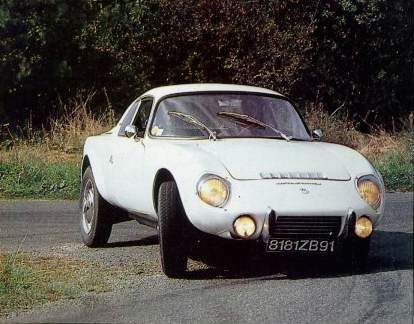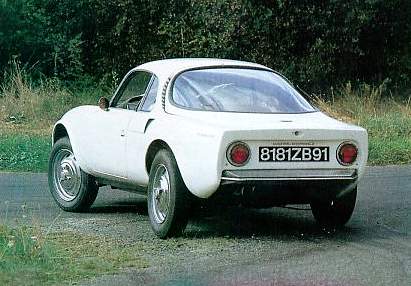Description
The Matra Djet 5S was one of the most significant early road cars produced under the Matra marque and a direct evolution of the pioneering René Bonnet Djet. Introduced in 1965, the 5S was the first true Matra-badged version of the world’s earliest production mid-engined sports car. With improved build quality, refined engineering and a more powerful engine than its predecessors, the Djet 5S became the definitive version of the original Djet concept — compact, lightweight, aerodynamic and technically ahead of its time.
The Djet originated with René Bonnet in 1962, but after Bonnet encountered financial difficulties, Matra took over production. Matra’s engineers immediately set about revising the car for greater reliability and better road manners. The result was a far more cohesive, better-built sports car, and the Djet 5S represented the peak of this development phase.
As with all Djets, the 5S used a fibreglass body mounted on a tubular steel backbone chassis. This chassis was exceptionally compact, designed to place the engine, transmission and fuel tank as centrally as possible for balanced handling. The mid-engine layout — unheard of on production sports cars at the time — gave the Djet superb weight distribution and a low polar moment of inertia. It was a layout that would only much later become commonplace in high-performance road cars.
The Djet 5S was powered by a Renault-sourced 1,108 cc inline-four, the “Sierra” type 804 engine, fitted with performance modifications and twin carburettors to deliver around 70–80 horsepower depending on final tune. In a car weighing just 600–650 kg, this allowed for lively performance, a top speed of around 185 km/h (115 mph) and excellent mid-range flexibility. The 5S’s engine sat low and directly behind the cockpit, paired with a Renault four-speed gearbox and driving the rear wheels.
Suspension was fully independent, another advanced feature for a small sports coupé of the era. At the front were double wishbones with coil springs and telescopic dampers, while the rear used trailing arms and coil-spring units. This layout gave the Djet 5S sharp, responsive handling and made the car stable and confidence-inspiring at high speed. Unassisted rack-and-pinion steering offered excellent feedback, and the car’s low overall height kept its centre of gravity close to the road. Four-wheel disc brakes were fitted as standard — an extremely rare feature in the mid-1960s — giving the car strong and consistent braking performance.
The bodywork of the 5S was characterised by clean, aerodynamic lines. The long, low nose fed air smoothly over a gently curved windscreen into a fastback tail with minimal overhangs. Air intakes at the sides and rear provided cooling for the mid-mounted engine, and the small frontal area helped reduce drag. The Djet’s styling was distinctive rather than conventionally pretty, but it was undeniably purposeful, with a compact footprint and a racing-influenced profile that reflected its engineering ethos.
Inside, the Djet 5S offered a minimal and focused cockpit. The driving position was low, with the driver sitting close to the central spine of the chassis. A full set of Jaeger instruments, simple controls and tightly wrapped upholstery created a sporting atmosphere. As with many small coupés of the period, practicality was modest, but Matra improved comfort and noise insulation compared with the earlier Bonnet-built cars.
On the road, the Djet 5S impressed with its agility, composure and willingness to change direction. Road testers praised its precision steering, secure grip and excellent stability at high speeds. The mid-engine layout gave it a character very different from front-engined rivals like the Alpine A110 or Lotus Elan — less playful, more neutral and surprisingly modern in feel. The combination of light weight and efficient aerodynamics gave the car brisk real-world pace, particularly on twisting roads where its balance shone.
The Djet 5S also enjoyed a measure of motorsport pedigree. Earlier Bonnet Djets had competed in endurance events, including the 24 Hours of Le Mans, and Matra would soon build on this legacy with its own deeply successful endurance programme. While the 5S itself was primarily a road car, its design DNA came directly from lightweight prototype racing, and its engineering reflected this heritage.
Production of the Matra Djet 5S remained low, as the model was built for only a short period before being replaced by the Matra 530. As a result, surviving examples are relatively rare and sought after today.
The Matra Djet 5S stands as a technologically bold and historically important sports car — the first production mid-engined road car refined into a genuinely usable package. With its lightweight construction, advanced chassis, aerodynamic body and lively performance, it remains one of the most distinctive and forward-thinking European sports coupés of the 1960s, and a key foundation stone in Matra’s motorsport-inspired road-car lineage.

